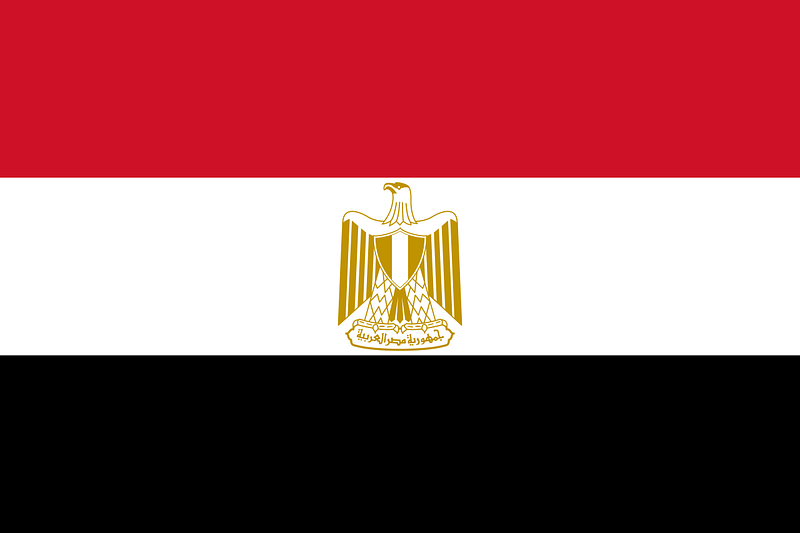This travel wiki page of Egypt will help travelers with quick and relevant information to consider when planning and visiting the country. It is difficult to find all the relevant information you need on culture, safety, travel restrictions, and things to do, so we summarize it all here. If anything is stale or outdated, please reach out and let us know! Let us dive in and explore more high-level information as an Egypt trip planner.
Last updated September 27th of 2022.
Table of contents
National Information & Culture
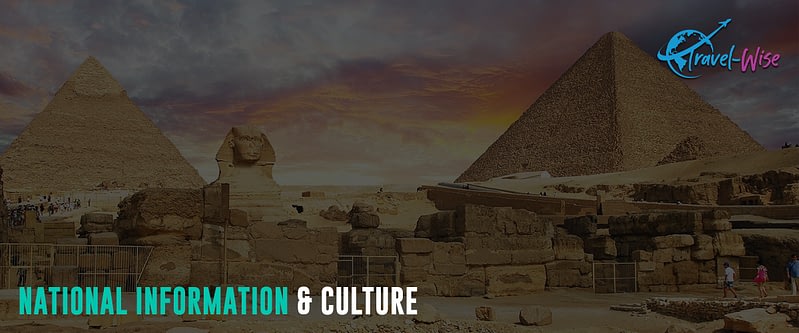
Officially, the Arab Republic of Egypt is a transcontinental country linking the northeast corner of Africa and the southwest corner of Asia via a land bridge formed by the Sinai Peninsula. The Mediterranean Sea borders it to the north, the Gaza Strip of Palestine and Israel to the northeast, the Red Sea to the east, Sudan to the South, and Libya to the west. The Gulf of Aqaba in the northeast separates Egypt from Jordan and Saudi Arabia. Cairo is its capital and largest city, and the Egyptian Pound (EGP) is the official currency. Out of 1 million square kilometers of total land area, 99% of Egypt’s population utilizes only 5%, as a large part of the country is desert. The Nile River and the Red Sea play a vital role as it is where most Egyptians live.
Religion
Egypt formed an essential part of early Christianity but later Islamized in the seventh century. The country is predominantly Muslim, with a significant Christian population and other faith. Hence, societal and cultural conventions should be followed when visiting the country. It includes taking note of acceptable dress codes and not drinking alcohol in the street. It is advisable to keep your cleavage, knees, and shoulders covered. When shopping in the markets, practice your bargaining skills, and don’t forget to carry enough cash with you, as not all shops and stores accept card payments.
Nonetheless, Egypt is an exciting country to visit, with some of the most fascinating historic places on the planet. It is a land of myths and legends and ancient civilizations. Not only that, but Egypt is most famous for the Great Pyramid of Giza, the only existing Ancient Wonder of the World.
The recently launched Egypt Official Tourism web page has loads of information, tips, and hints to help you plan for your incoming trip. It is worth taking a look at when planning your travel.
Special Travel Considerations
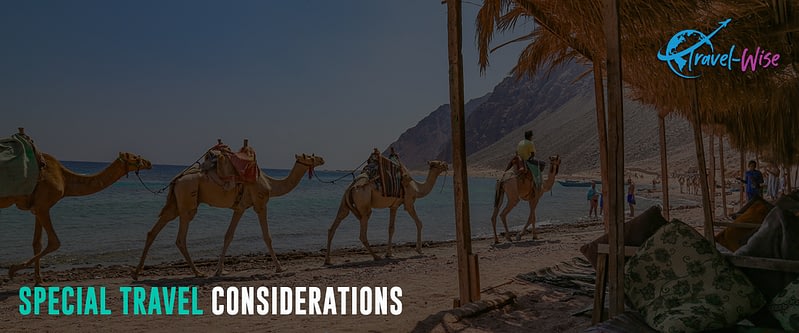
Covid-19 Policy
As of June 17, 2022, there are no Covid-19 restrictions for travelers coming into the country. Therefore, all arriving passengers, both foreign and Egyptian, can enter without showing proof of vaccination or a negative RT-PCR test. But these policies may vary over time. Thus, checking the latest Covid-19 Policy in Egypt is advisable before your trip.
27th UN Climate Change Conference
Egypt has been preparing for the 27th UN Climate Change Conference (COP 27) on November 6-18, 2022, in the Red Sea City of Sharm El-Sheikh in South Sinai. Attending the conference are representatives of many nations, environmental and other non-governmental organizations, and thousands of people. Reconsider your schedule if you plan to travel to Egypt on those dates, as thousands of people will flock to the country.
Global warming is a worldwide concern, and Egypt is not an exemption. The potential rise in sea levels could threaten Egypt’s densely populated coastal areas and have grave consequences for the country’s economy, agriculture, and industry. According to some climate experts, a significant rise in sea levels could turn millions of Egyptians into environmental refugees by the end of the 21st century.
Visa Information
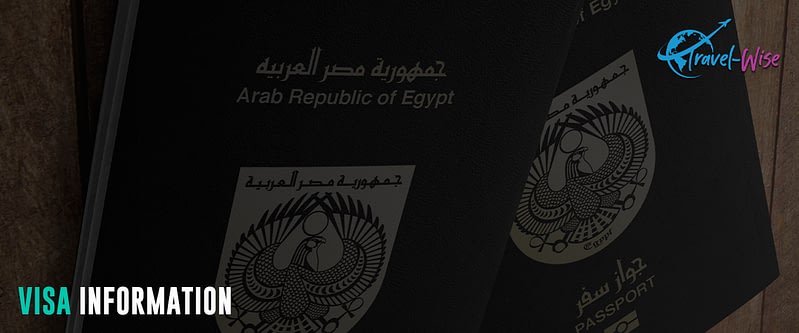
Over 180 nationalities qualify for getting a visa upon entry, provided the visitor has at least six months of a valid passport from the date of arrival to Egypt and has a valid and used visa for the United States of America, the United Kingdom, the Schengen Area (Schengen visa), Japan, Canada, Australia, or New Zealand. In addition, 78 nationalities qualify for visas on entry or an electronic visa. You can check the complete list of eligible countries, apply and pay for your visa online using Egypt’s online application portal, Egypt Visa. Also, it is possible to get your visa upon arrival for $25 from the airport’s bank counter in the passport control area. For tourists arriving at Luxor or Aswan airports during June, July, and August, a $10 discount is available.
Popular Attractions
Egypt is known for its ancient civilizations, as evidenced by the famous monuments and temples dating back thousands of years.
The Great Pyramid of Giza
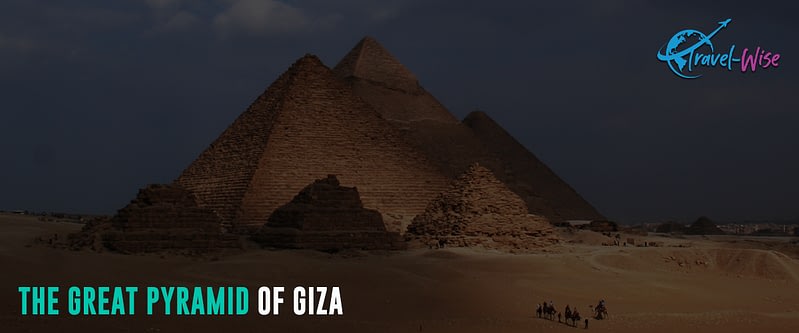
Egypt is home to the only remaining Ancient Wonders of the World, The Great Pyramid of Giza, also known as Giza Necropolis. It has stood the test of time in Cairo and is undeniably the highlight of any Egypt trip. These pyramids served as tombs of the Pharaohs Cheops (Khufu), Chephren (Khafre), and Mycerinus (Menkaure), with the enigmatic Sphinx guarding around. The ongoing excavations on the Giza plateau reveal that these pyramids were built by an organized Egyptian workforce and not by enslaved people, as is portrayed in the movies. Finding settlements with large-scale food production and medical facilities proves it.
For those who want to explore further, there are tombs, temple ruins, and smaller satellite pyramids littered around these massive structures.
Luxor Temples and Tombs
Luxor is a modern city on the east bank of the Nile River, south of Egypt. It is the site of Thebes, the capital of the ancient kingdom. Today, Luxor is the world’s most fantastic open-air museum, home to some of Egypt’s most famous temples, tombs, and monuments. These sites were part of the UNESCO World Heritage sites in 1979.
Temple of Karnak
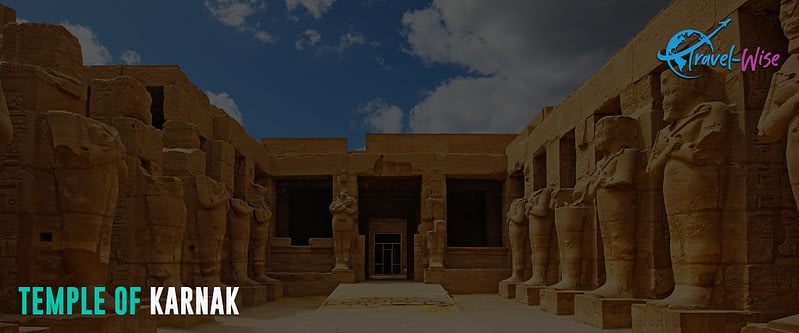
The Temple of Karnak is a complex of sanctuaries, kiosks, monuments, and obelisks. It is the largest ancient religious site consisting of three main temples, smaller enclosed temples, and several outer temples. The Temple of Amun dominates the complex and serves as the main temple. It is famous for the Hypostyle Hall of 134 massive columns arranged in 16 rows. Two other substantial temple complexes on this site are the houses of Amun’s wife Mut and their son Khonsu, surrounding the main structure. An avenue of ram-headed sphinxes links the Mut Temple Enclosure to the Temple of Amun.
Luxor Temple

The Temple of Luxor is less complex than Karnak. It was built mainly by the New Kingdom pharaohs Amenhotep III (1390–1352 BC) and Ramses II (1279–1213 BC) and dedicated to the rejuvenation of kingship, where the crowning of pharaohs happened. In front of the temple is a 3 km avenue of Sphinxes to the main temple.
Valley of the Kings
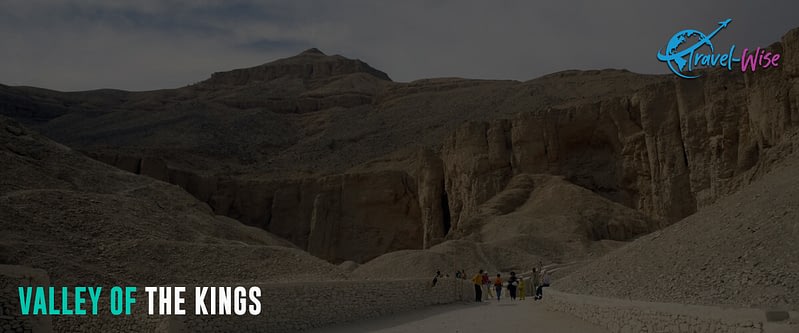
The Valley of the Kings on the west bank of Luxor has been the site of royal burials since 2100 BC. It has 63 magnificent royal tombs and chambers, including the Tomb of Ay, Tomb of Horemheb (KV 57), Tomb of Ramses III (KV 11), Tomb of Ramses VI (KV 9), and Tomb of Seti I (KV 17). Each tomb has various wall art with scenes from Egyptian mythology, beliefs, and funerary rituals during the period. Once called the Great Necropolis of Millions of Years of Pharaoh, the valley is dominated by the pyramid-shaped mountain peak of Al Qurn (The Horn).
Great Temple of Ramses II
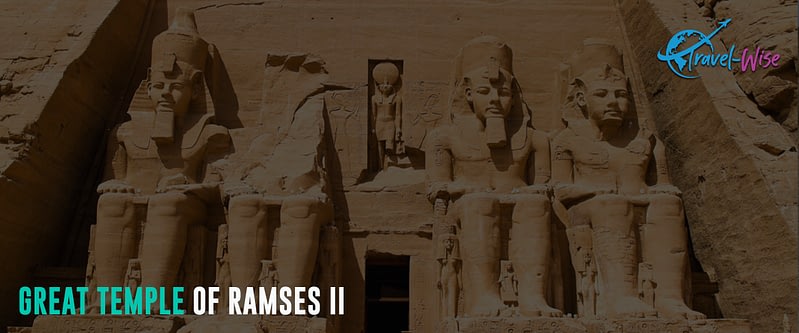
The Great Temple of Ramses II is carved out of the mountain on the west bank of the Nile River between 1274 and 1244 BC. It forms part of the twin temples in Abu Simbel, beside the small temples of Hathor and Nefertari. The temple honors Ramses II, the most powerful pharaoh of the New Kingdom. The four colossal statues of the pharaoh in front of the temple seem to watch over the kingdom and show the pharaoh’s strength.
St. Catherine’s Monastery
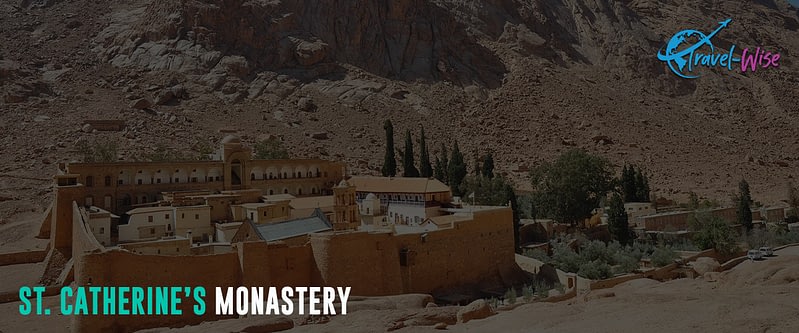
Saint Catherine’s monastery traces its founding to about 330 AD. It lies at the mouth of a gorge at the foot of Mount Sinai (believed to be where Moses received the Ten Commandments), near Saint Catherine in Egypt. The monastery honors St Catherine, the legendary martyr of Alexandria, who was tortured on a spiked wheel and then beheaded for her faith. Her body was ‘found’ about 300 years later by monks from the monastery in a state of perfect preservation.
In 2002, the monastery was part of the UNESCO World Heritage Site. Today, St Catherine is considered one of the oldest continually functioning monastic communities in the world, and touring it requires conservative clothing for both gender.
Cruising the Nile River
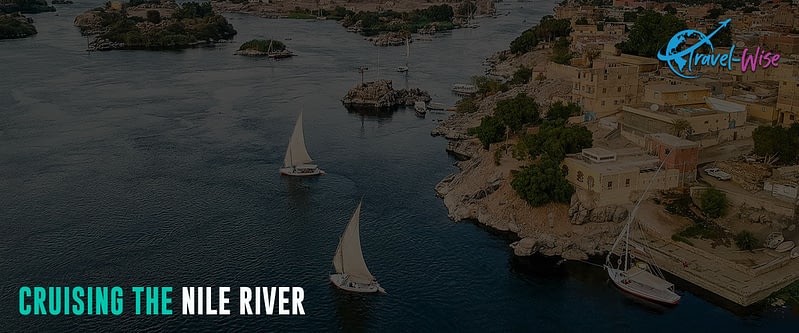
Cruising the Nile is one of the relaxing ways to see the temples along the river banks en route to Luxor and Aswan. Among the famous sights on a Nile River Cruise are the Temple of Kom Ombo and Edfu’s Temple of Horus, where all the big cruise boats stop.
Red Sea
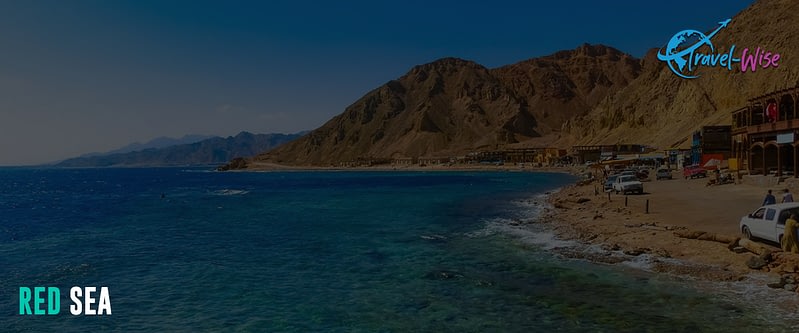
The Red Sea is the world’s northernmost tropical sea. Off the coast of Egypt, it is one of the most beautiful places to go diving. Its coral reefs are renowned among scuba divers for the soft corals on display and the vast amount of sea life, ranging from colorful reef fish and nudibranchs to sharks, dolphins, turtles, rays, and even sea cows. Aside from the sea life and corals, the Red Sea is a major wreck-diving destination. Among the most famous wreck is the Thistlegorm, a British WWII cargo ship bombed by the Germans in 1941.
Egyptian Museum
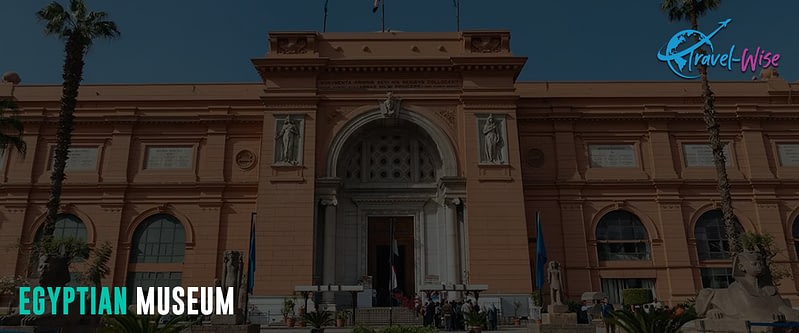
With its strategic location in downtown Cairo, The Egyptian Museum is accessible to visitors exploring the city. The museum houses one of the world’s most important collections of ancient artifacts, including glittering treasures of Tutankhamun and other great pharaohs, alongside the grave goods, mummies, jewelry, eating bowls, and toys of Egyptians in history.
Abydos Temple
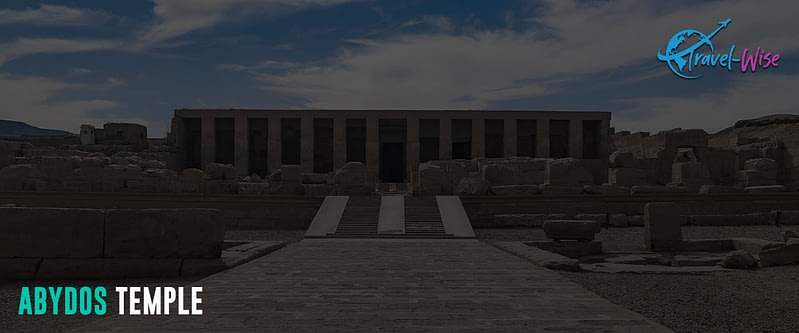
Abydos, one of the oldest cities in Ancient Egypt, was used as a graveyard from predynastic to Christian times (4000 BC-AD 600), with more than 4500 years of constant use. Unfortunately, much of the site remains unexcavated.
The Temple of Seti I is the first structure in the Abydos complex. This great limestone L-shaped structure had seven great doorways. It was dedicated to the six significant gods – Osiris, Isis, Horus, Amun-Ra, Ra-Horakhty, and Ptah – and to Seti I (1294–1279 BC) himself. Like any other ancient temple in Egypt, it is defined by massive papyrus columns and wall art of pharaohs and the old gods. The temple is also famous for the Abydos King List and Abydos graffiti.
The Temple of Osiris in Abydos is one of Ancient Egypt’s most fascinating artistic treasures. It served as the cult center of Osiris, the god of the dead. The Egyptians later identified the Tomb of Djer as the tomb of Osiris.
Primary Spoken Language(s)
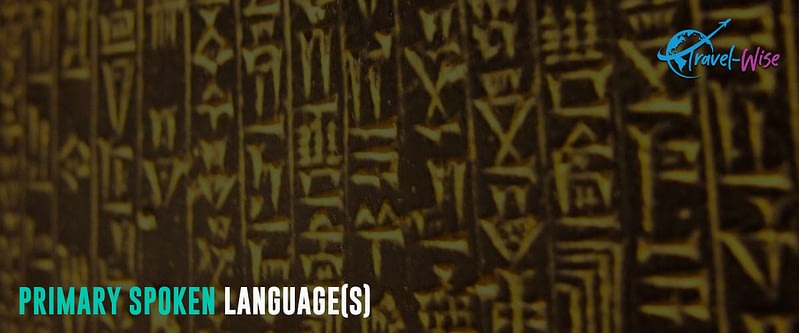
Literary Arabic is the official and widely written language of Egypt. The most spoken language is Egyptian Arabic, followed by Saidi Arabic as the minority language. The main foreign languages taught in schools are English, French, German, and Italian.
Safety Concerns
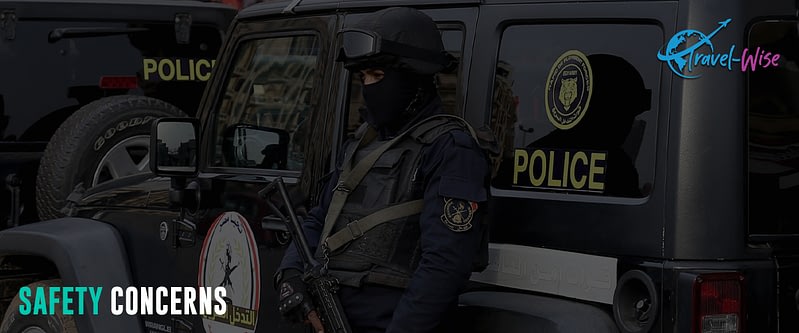
Traveler safety in the region is subject to change, with civil unrest, tourist scams, and terrorism all presenting threats in recent years. Although tensions in the neighboring country have stabilized recently, some parts of Egypt and all land borders are still unsafe for travel.
Assessing the likelihood of danger when visiting tourist hotspots, especially religious sites, is advisable. Although uncommon, attacks at tourist sites do occur. So, monitoring the threat level through local news sources, knowing any religious or public holidays that could attract protests or civil unrest, avoiding large crowds, and considering a small group tour can help you stay safe.
Pickpockets
Aside from that, tourists should be aware of scams and pickpockets in public places, markets, and Giza. Hence, always leave your valuables at home or in a safe place in your hotel. Cons include vendors offering “free” gifts but will ask you for donations after. Also, watch out for taxis with “broken” meters. If this is the case, negotiate the price before accepting the ride.
Local Laws
When visiting any foreign country and place, adhere to the local cultural customs and laws. For example, in Egypt, it is not allowed to take photos of military installations, public buildings, and some bridges and canals (including the Suez Canal). Disobeying this rule could get you in serious trouble with the local authorities. So, be careful what you snap. In addition, flying drones are also prohibited in the country.
In an emergency, dial 122 for police assistance, 123 for ambulance needs, and 126 for tourist police.
When planning your trip, don’t forget to consider your own country’s travel advisory to Egypt. You can also check the US travel advisory to Egypt for details.
Budget Considerations
One does not need to break the bank for a fully immersive trip to Egypt. Generally, you will make the most of your time and money with some research and planning.
Start by looking for a flight to Egypt aside from entering its capital, Cairo. Then, when you fly to Egypt via Luxor, Aswan, Hurghada, Sharm El Sheikh, Marsa Alam, or Alexandria airports, you can save hundreds or even half the price.
Accommodations
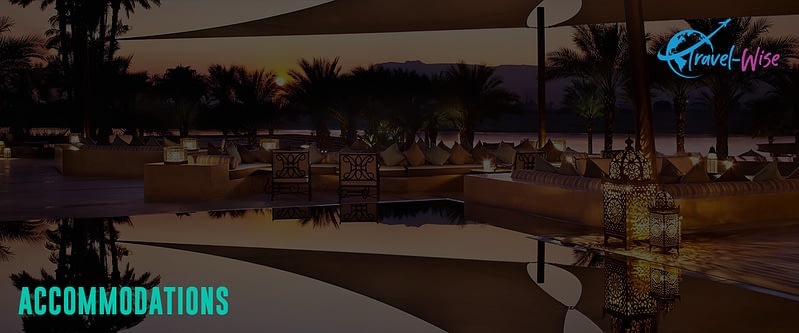
Budget accommodation ranges from $20 – $40 for a double room, relative to the location and season. Book a room in the heart of the city when staying in Cairo. It makes everything accessible, from transport services to restaurants, and within walking distance to a few destinations, including the Egyptian Museum and the Nile.
There’s no more satisfying way to learn about local culture than by trying their foods and cuisine. In Egypt, you can get a complete meal on the go for as low as $2, while a sit-down restaurant will cost you $5-$12 per meal.
For domestic traveling, a five-hour train ride from Cairo to Alexandria is around $5, while the average cost for the more popular Go Bus is $10. Unlike flying, trains and buses are cheaper and the best options for budget travelers.
Passes
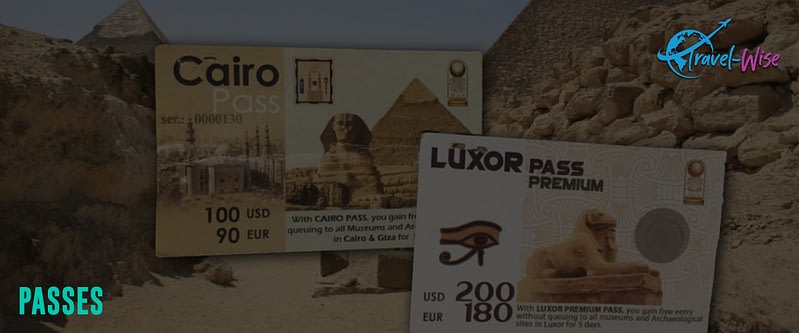
Lastly, buying Cairo Pass and Luxor Pass, worth $100 each, allows you to save a bundle. Cairo Pass will give you unlimited entries to all the main sites in Cairo and Giza. It includes the Egyptian Museum, the Pyramids of Giza, Saqqara, and Dahshur. On the other hand, Luxor Pass gives you access to archaeological sites on Luxor’s east and west banks, except for the tombs of Seti I and Nefertari. The latter are included in the premium Luxor Pass, worth $200.
Considering the above figures, a budget traveler can fully immerse and explore Egypt for around $900 for two weeks. It includes a few sit-in restaurant meals, budget hotel accommodation, transportation, and Cairo and Luxor Pass tickets. Excluded are your flight tickets from your home country.
Customs And Import Restrictions
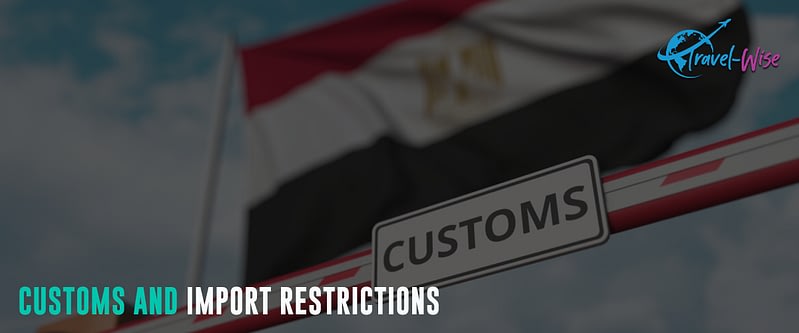
Egypt doesn’t have unusual customs and import restrictions. But still, travelers should be aware of the following when entering the Arab Republic of Egypt:
- Each traveler can have a maximum of one liter of alcoholic drinks and 200 cigarettes, 25 cigars, or 200 grams of Tobacco.
- Purchases from duty-free shops within 48 hours of arrival not exceeding $200 are exempted from customs duties as long as it is for personal use. Egyptian nationals can do this twice a year and four times for foreign tourists.
- All firearms, including sporting guns, narcotics, drugs, cotton, poultry, and seedlings, are prohibited.
- Precious items purchased in Egypt for personal use, such as gold and silver, can only be exported in small quantities.
- Certified government health certificates are required if a traveler is bringing a pet. They should be open to additional inspection by local veterinarians.
Visit the Egyptian Customs Authority web page for the customs rules and regulations list.
Climate Considerations
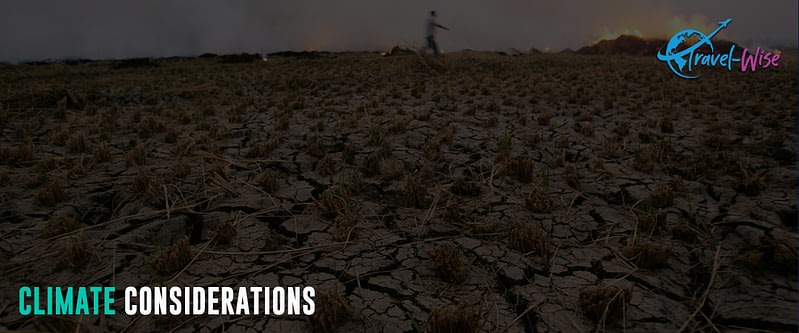
The climate of Egypt is dry, hot, and dominated by desert, where rainfall is scarce and sunshine is abundant. The climate is desert in the eastern part of the Sahara (arid with very high temperatures). Only on the northern coast, along the coastal areas, is a certain amount of rain in winter.
The temperatures on the north coast are milder, while it gradually gets warmer as you go south. On the other hand, temperatures along the Red Sea coast are higher than on the Mediterranean coast but lower than in inland areas. However, summer from June to August is scorching in the central and southern parts of Aswan, Luxor, Asyut, and Sohag. The average temperatures can exceed 40 °C (104 °F). During the winter, the only region that can get cold from December to March is the mountainous area of the Sinai Peninsula, with occasional snow, due to its high elevations.
The best time to visit Egypt is from October to April when temperatures are more relaxed but still with guaranteed sun. But watch out for the khamaseen, a hot sand wind occurring irregularly in the first half of the year, as it can instantly raise the temperature. But don’t let khamaseen affect your trip, as it is not a constant sandstorm but relatively short blasts that can last a couple of hours.
Primary Transportation Options
Egypt has a highly functional transportation network guaranteed to take every traveler where they need to be and enrich their travel experience.
Air
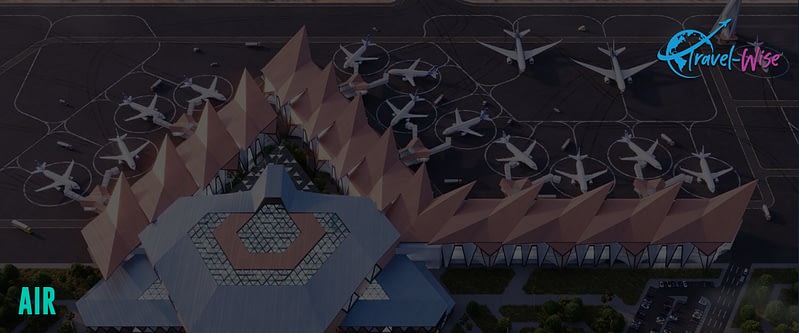
Traveling by air is the best way to get around the destinations in Egypt, especially if you want to save time. Cairo International Airport is the primary entry point for tourists coming to the country. It also serves as the central hub for Egypt Air. In addition, various domestic flight services and airlines connect to major airports, including Abu Simbel, Alexandria, Aswan, El Gouna, Hurghada, Luxor, Marsa Alam, Marsa Matrouh, Port Said, Sharm el Sheikh, and St. Catherine.
Railway
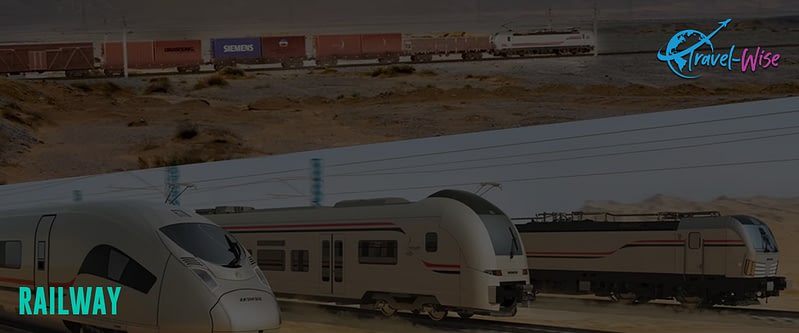
Using the railway is one of your best options if you want to do a scenic route. Egypt has air-conditioned trains that are great for extended travel, providing a comfortable land journey. There are railway networks from Cairo to Alexandria, the Delta, the Canal Zone, the coast to Marsa Matrouh, and up the Nile Valley to Luxor and Aswan. Schedules, fares, and buying tickets online are available on the Egyptian Railways website. Passengers can also choose a first-class ticket, with waiter service, reclining armchairs, and onboard movies. Fares are affordable, depending on the routes and distance.
Another option will be sleeping trains, offering absolute luxury for your entire trip. Passengers here get a comfortable two-bed cabin with a sink, breakfast, and dinner, and access to a dining car and a bar. Of course, expect the fares to be relatively hefty but still cheaper than flying. You can check and book schedules through their web page.
Bus
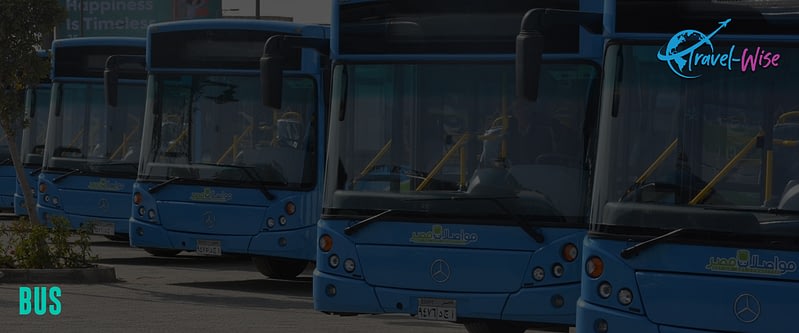
Buses are the best public transport option away from the Nile. It runs between all main destinations, with several departures daily on major routes. But most bus company fleets have short legroom, which will be uncomfortable for tall passengers. If you opt for a “deluxe” bus service, check Go Bus as they have more leg space. It can be the go-to company for foreign travelers.
Microbuses, a 14-seater mini-bus, are also available. It runs on even more routes than the big buses and can be helpful for short journeys. But they do not have a fixed schedule and leave when the bus is full. It can be quicker than the regular bus, but the downside is being prone to accidents for speeding and maniacal driving on congested roads.
Taxis
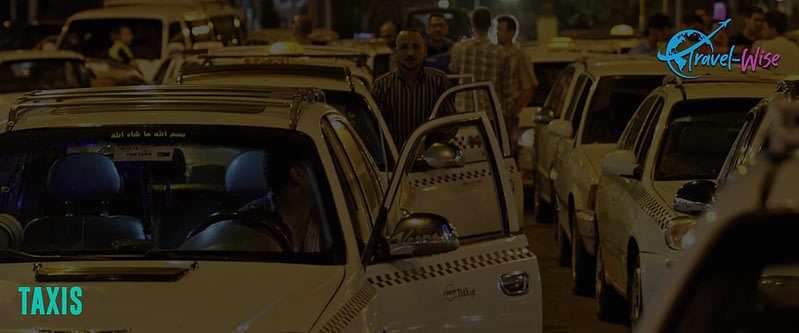
Taxis can be your best option for out-of-way sights. The taxi drivers will happily take you on an out-of-town day trip. It can also be your best option when taking a tour to Sinai, as there is no available public transport between South Sinai resort towns and St Katherine in the High Mountains. If you opt for this, don’t forget to agree on the price with the driver beforehand.
Car Rental
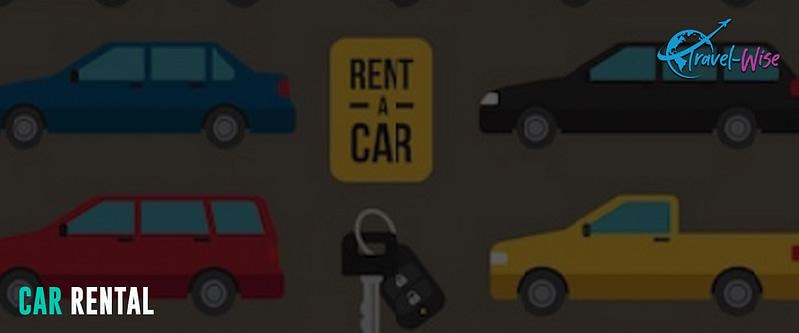
Self-drive car rental is also possible if you want to visit more remote areas quickly. To do this, you must have an International Driving License. But driving in Egypt is not for the faint-hearted motorist, as road situations can be troublesome. As an option, hire a car and driver if getting behind the wheel is not your tea.
Boat
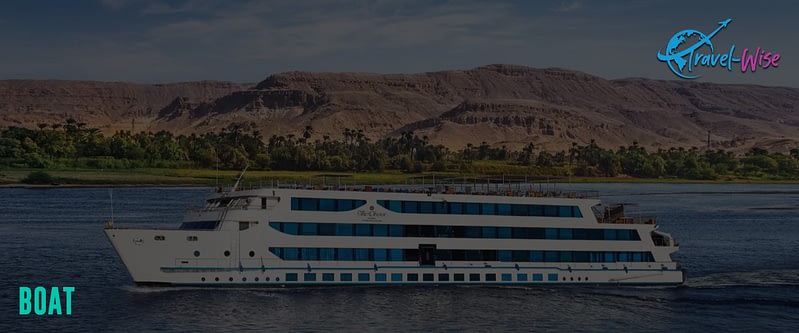
Cruising the Nile River is another option to explore the region. Cruise boats, Dahabiyas, and Feluccas, operate along the Nile, offering at least one to five nights of cruises navigating the river with stopovers to various destinations. Most sail from Luxor to Aswan, or vice versa, and stops at the temples of Esna, Edfu, and Kom Ombo.
Start Trip Planning
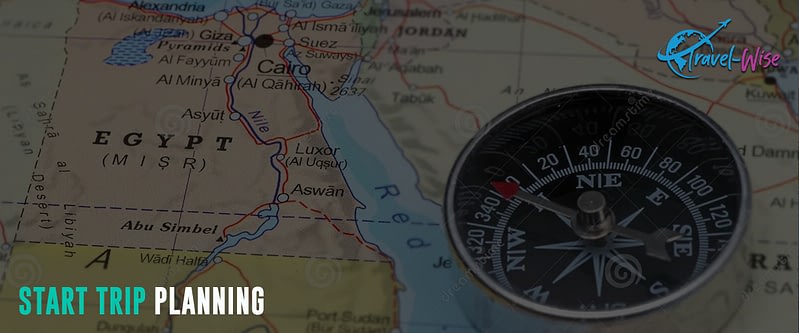
Travel-Wise is made from the ground up to help people travel more, break down the barriers that make it tough to get going, and start your journey as painlessly as possible. Bookmark our other Country Guides to help kick-start your research for future travels. We also offer templated itineraries from our staff and community that help serve as a building block for your trip plans. Alternatively, we also utilize AI to offer a way to generate itinerary ideas. This saves much time just getting you up and running with a template. From there, you can use the trip planner to create your customized itinerary, invite friends and family for collaboration, find others from Travel-Wise to join the trip, book and track important information, journal, and share your experiences at the end or along the way!

